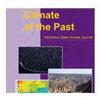The Southern Ocean marine ice record of the early historical, circum-Antarctic voyages of Cook and Bellingshausen
IF 3.2
2区 地球科学
Q1 GEOSCIENCES, MULTIDISCIPLINARY
引用次数: 0
Abstract
Abstract. The circumnavigations of Cook (second voyage, 1772–1775) and Bellingshausen (1819–1821) were attempts to find any great southern land mass poleward of ∼ 50° S and consequently involved sailing for three or two summers, respectively, in polar latitudes around Antarctica. Extensive sea ice eventually blocked each voyage's southern probes, although Bellingshausen, unknowingly at the time, saw the Antarctic continent. However, these attempts meant sea ice and iceberg records from the early historical period were collected nearly simultaneously from around much of Antarctica. Here, these records are extracted from journals, analysed, and compared to each other and the modern satellite record of both forms of marine ice. They generally show an early historical period with a more northerly record of both forms of marine ice than normal for today, but to a geographically varying degree. However, the early historical period in the Pacific sector of the Southern Ocean saw marine ice generally within the range of modern observations for the same time of year, but the Weddell Sea and Indian Ocean marine ice, particularly on Cook's voyage, then extended several degrees further north than in today's extreme ice years.库克和贝林斯豪森早期历史性环南极航行的南大洋海冰记录
摘要。库克(第二次航行,1772-1775 年)和贝林绍森(1819-1821 年)的环球航行都是为了寻找南纬 50 度以上的南方大陆块,因此分别在南极洲周围的极地纬度航行了三个或两个夏天。大面积的海冰最终阻挡了每次航行的南方探测,尽管贝林肖森当时在不知情的情况下看到了南极大陆。不过,这些尝试意味着历史早期的海冰和冰山记录几乎是同时从南极洲大部分地区收集到的。在这里,我们将从日志中提取这些记录,对其进行分析,并将其与两种形式的海冰的现代卫星记录进行比较。它们普遍显示,在早期历史时期,两种形式的海洋冰的记录都比今天的正常记录更靠北,但地理上的程度各不相同。然而,在南大洋太平洋部分的早期历史时期,每年同一时间的海冰一般都在现代观测的范围之内,但威德尔海和印度洋的海冰,特别是库克航程中的海冰,当时比今天的极冰年向北延伸了几度。
本文章由计算机程序翻译,如有差异,请以英文原文为准。
求助全文
约1分钟内获得全文
求助全文
来源期刊

Climate of The Past
地学-气象与大气科学
CiteScore
7.40
自引率
14.00%
发文量
120
审稿时长
4-8 weeks
期刊介绍:
Climate of the Past (CP) is a not-for-profit international scientific journal dedicated to the publication and discussion of research articles, short communications, and review papers on the climate history of the Earth. CP covers all temporal scales of climate change and variability, from geological time through to multidecadal studies of the last century. Studies focusing mainly on present and future climate are not within scope.
The main subject areas are the following:
reconstructions of past climate based on instrumental and historical data as well as proxy data from marine and terrestrial (including ice) archives;
development and validation of new proxies, improvements of the precision and accuracy of proxy data;
theoretical and empirical studies of processes in and feedback mechanisms between all climate system components in relation to past climate change on all space scales and timescales;
simulation of past climate and model-based interpretation of palaeoclimate data for a better understanding of present and future climate variability and climate change.
 求助内容:
求助内容: 应助结果提醒方式:
应助结果提醒方式:


